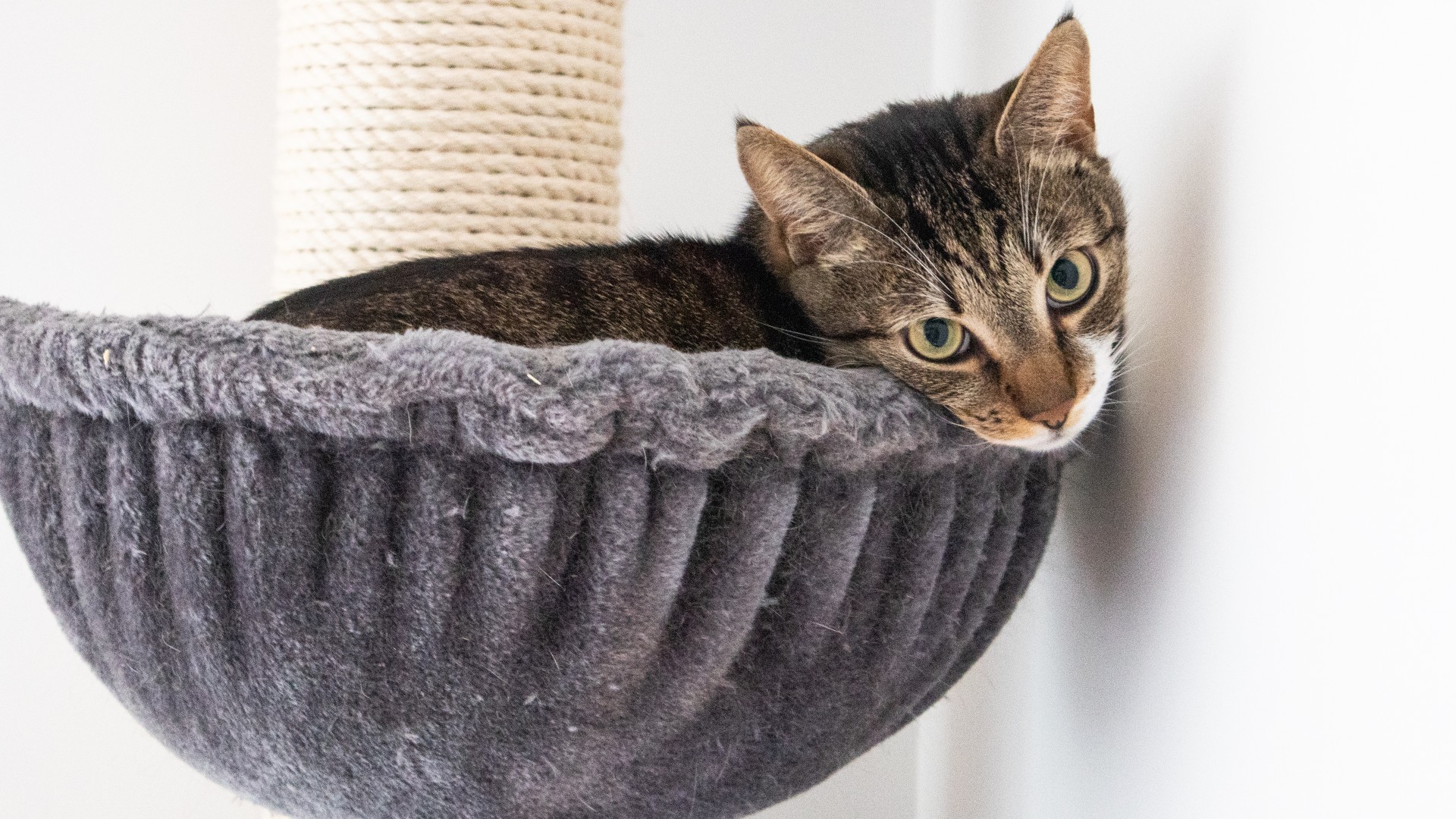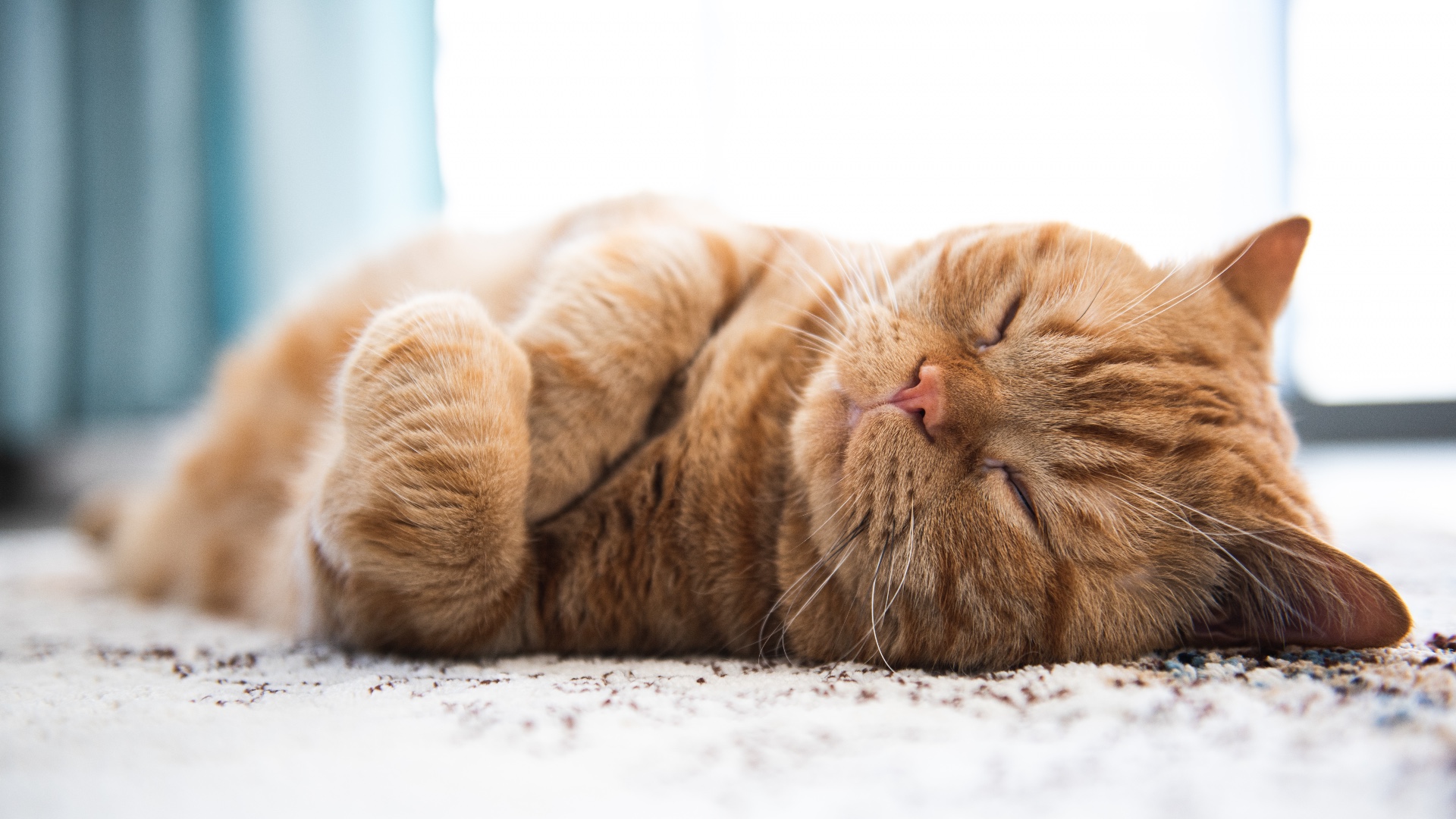Seven signs your cat isn't getting what it needs to be happy
Do you know the signs that your cat is unhappy? We reveal what to be on the lookout for and share some simple ways you can brighten up their day

Are you worried that your cat isn’t getting what they need to be happy? While most cats are independent and content to spend a portion of the day occupying themselves, just like humans, our feline friends are social creatures who enjoy spending time with their people and who need physical and mental stimulation each day to ensure they stay healthy.
Unfortunately, unlike us, cats are limited in how much fun they can create independently. They rely on their humans to provide them with a variety of enrichment options that they can turn to when their brains and bodies are in need of a good workout.
Cats that don’t get enough time to play with the best cat toys or who aren’t getting the time, love and affection from their humans that they need will often feel bored and turn to unwanted behaviors as a way of boosting their happiness levels and giving themselves something to do. While these behaviors can feel frustrating, it’s worth remembering that it’s your cat’s way of communicating to you that an important need isn’t being met.
Boredom and unhappiness usually go hand in hand, so we spoke to Dr. Joanna Woodnutt to get her take on the signs to be on the lookout for, as well as how you can add more fun to your feline’s day. It’s important to note that many of the behaviors listed below are also common signs of diseases and other behavioral issues, so please do consult your vet first.

Dr Joanna Woodnutt qualified as a veterinarian from the University of Nottingham where she then went on to practice companion animal medicine in the Midlands. She really took to the consulting side of things and helping clients with medical problems such as dermatology, behaviour and nutrition - anything that involved helping clients understand their pets better.
1. Excessive vocalization
Is your cat meowing at night? Perhaps your feline friend starts crying the minute you walk in the door or chatters away in your ear while you’re trying to sleep. While some breeds are certainly known for being more vocal than others, meowing or crying excessively can be a sign of boredom and a feline friend who’s in desperate need of some attention.
2. Overgrooming or other repetitive behaviors
Overgrooming or engaging in other repetitive behaviors, such as biting their skin or pulling out their fur, are often a bored cat's way of trying to occupy themselves. Unfortunately, overgrooming can lead to skin irritation which will cause your cat to groom even more, creating an ongoing cycle of frustrating behavior.
“Overgrooming can be a sign of stress, but boredom and stress can also go hand in hand,” Woodnutt explains. “Luckily, you don’t always have to decide which your cat is suffering from, as many of the changes you can make will improve both conditions.”
Get the best advice, tips and top tech for your beloved Pets
3. Scratching the furniture

How to keep cats from scratching the furniture is a common question amongst pet parents and sometimes it’s as simple as realizing that this behavior may be your feline friend's way of letting you know they’re not getting enough physical and mental stimulation in their day. Repeatedly scratching your couch or bed after you’ve told them not to, is often a cat's way of trying to communicate their boredom and get your attention.
However, Woodnutt says it’s important to note that scratching the furniture is also a sign of anxiety and territory marking. If your cat is engaging in this behavior repeatedly, we recommend having a chat with your vet who will be able to give your cat a good check up and offer advice and guidance specific to their situation.
4. Fighting with other cats
Aggressive behavior is another key sign of boredom and may include something as extreme as your kitty choosing to fight other animals in the house or minor acts of aggression, such as hiding under the bed or behind doors and then sinking their claws into your ankle as you walk past. Bored cats will often try to chase other animals or get their human’s limbs in a vice as a way of adding some stimulation into their day.
5. Overeating
Have you ever had a day where you didn’t have much to do and you found yourself sitting on the couch channel surfing and eating the entire contents of your fridge? Most of us have been there and as it turns out, our feline friends will also consume more calories on days when they’re feeling bored. If you notice your cat visiting their food bowl with greater frequency than they usually would, it’s worth figuring out if they’re overeating because they’re looking for something to do as opposed to appeasing hunger.
“Cats can eat to try to alleviate their boredom, resulting in overeating,” says Woodnutt. “This can lead to obesity and should be prevented with careful portion control. It’s also important to remember that several serious diseases cause greediness in cats, so it might be worth a trip to the vet if there’s a chance your cat’s appetite could be more medical than behavioral.”
6. Inactivity

While it’s true that cats spend an average of 15 hours a day getting their beauty sleep, excessive napping with no periods of play could well be an indication that your cat is bored. Our fur friends are naturally curious little creatures who tend to love exploring the world around them in short bursts throughout the day, interspersed with lots of shuteye. If your kitty is only waking to eat and then going straight back to sleep, they may be in need of more enrichment.
“It seems strange that a bored cat could get lazier, but this is exactly what happens,” explains Woodnutt. “Bored cats may retreat to their bed for large portions of the day and get up to very little. Don’t forget to check your cat is inactive rather than lethargic - if your cat struggles to get the energy to get up for food or play then something far more serious could be going on.”
7. Getting into mischief
A bored cat tends to have an uncanny knack of creating their own fun - and it may well come at the expense of your precious belongings! From climbing the curtains to knocking valuables off the shelf, your kitty may well seek to create their own entertainment if they feel you’re not providing them with enough things to do.
How to boost your cat's happiness
We recommend speaking with your vet if you’re concerned that any of the above behaviors you’re witnessing in your feline friend may be the result of an underlying health condition. However, once you’ve ruled that out and are fairly certain boredom and unhappiness are the cause, here are some ways you can add more stimulation into your kitty’s day.
1. Invest in a new toy or two

While not every kitty is super active or likes to play, the sheer range of cat toys on the market these days means there’s something for everyone. From the humble teaser wand that lets you spend quality time strengthening your bond with your fur friend in a fun way through to the best interactive cat toys that will allow your kitty to play independently when you’re out and about, there are lots of great options available to suit every budget. Also, don’t forget about puzzle toys that can be filled with treats as these are a fantastic way to give your cat’s brain a good workout.
If you’re worried about the cost of investing in some new cat toys, Woodnutt has a brilliant solution. “A good option to keep the cat toy costs down is to rotate toys regularly. Keep most of their toys out of sight, and swap them in occasionally to keep things fresh.”
2. Hide treats around the house
If you tend to be out and about a lot during the day, one way of providing your cat with extra stimulation is to hide some of the best cat treats around the house. Setting up a hunting game indoors will tap into your kitty’s natural instincts and provide them with a fun way to occupy themselves in your absence.
“One really good option is to use puzzle feeders to encourage your cat to ‘hunt’,” Woodnutt suggests. “You can hide them around the house with your cat’s food in, allowing them to practice their hunting skills and giving them something to do. Don’t forget to let your cat work out how to get the food out and then slowly increase the difficulty- going straight to putting one on top of the wardrobe is likely to result in a confused and frustrated kitty!”
3. Spend some quality time with your cat

You know that cat play is great for your feline friend's physical and mental wellbeing, but did you also know it’s one of the best things you can do to deepen the connection the two of you share? It’s true. While there’s no denying that cats are independent creatures, they love getting our undivided love and attention, so be sure to spend some time engaging with your cat each day to help banish boredom.
4. Install a catio
Depending on where you live, you might not have enough space to invest in the best outdoor cat enclosure, so constructing a catio is a great alternative. These give indoor cats a place to go where they can view what’s going on outdoors and will allow them to engage with their surroundings in a safe and secure way. You can make your own catio if you’re feeling creative, but if not, don’t worry - they also come pre-made in a range of sizes and designs.
“While cats can and do get bored, they also suffer from a range of other behavioral problems that are very common,” explains Woodnutt. “Talking to a vet or clinical animal behaviorist can help you decide when your cat is bored, or when something more worrying is occurring.”
Looking for a fun and inexpensive way to keep your kitty physically and mentally stimulated? Then be sure to check out our guide on the reasons to use a cat puzzle feeder toy. You might also want to read our top tips on how to be a good cat owner.

Kathryn is a freelance writer who has been a member of the PetsRadar family since it launched in 2020. Highly experienced in her field, she's driven by a desire to provide pet parents with accurate, timely, and informative content that enables them to provide their fur friends with everything they need to thrive.
Kathryn works closely with vets and trainers to ensure all articles offer the most up-to-date information across a range of pet-related fields, from insights into health and behavior issues to tips on products and training.
When she’s not busy crafting the perfect sentence for her features, buying guides and news pieces, she can be found hanging out with her family (which includes one super sassy cat and a kitten), drinking copious amounts of Jasmine tea and reading all the books.
She has written for a range of publications, including Fit&Well, Top Ten Reviews, LiveScience, Goodto, and Product Hunt.
